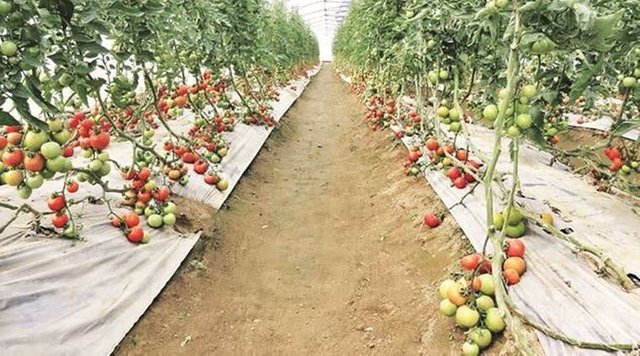Horticulture checklist
This checklist is designed to get you thinking about some of the important
things to consider before embarking on a horticultural venture.
By considering questions and cross checking actions, potential investors
can increase the likely success and profitability of their new business.
Detailed information, tips and pointers are included to help potential
investors answer the questions within the checklist.
There are two ways to approach investment in horticulture. One is to
identify market opportunities before considering the purchase of suitable
land. The other approach is to identify opportunities to utilise an existing
area of land. This checklist starts with the assumption that you own, or have
your eye on, a particular parcel of land.
The checklist is presented in three parts:
Part A: Regulations that apply to the use of land and licences you may
need to develop a block for horticulture.
Part B: Crop requirements — suitability of local climatic conditions, soil
type and water source.
Part C: Production and marketing costs and considerations.
Use the boxes beside each action to keep track of what you have and have
not considered.
Part A: Regulations and licences
Are there any local, regional or state planning regulations
concerning horticultural activities on the proposed
development site?
To avoid conflict between different land uses and to support horticultural
development in priority areas, there may be regulations in place that restrict
or promote horticultural activity on the site.
Certain developments or changes in land use listed under local or regional
planning schemes will require approval. Failure to obtain approval where
necessary is an offence.
Action: Read Guide to legislation, section 1 (see page 41).
Check with your local government authority (LGA) for
possible controls on horticultural developments, including
minimum setback regulations, bans on the use of particular
chemicals and bans on the use of manures.
Ask your LGA planning department if there are any other
regional or state planning policies or schemes concerning
horticultural activity on the site.
Do you need to clear land?
Permits from the Department of Environment Regulation (DER) and
potentially your LGA are required to clear land. It is important to
investigate the legalities and environmental impact of any land clearing
before planning further development.
Information on land clearing, including application forms, fact sheets and
guides can be found on the DER website.
In reviewing proposals, the principles contained in Schedule 5 of the
Environmental Protection Act 1986 (EP Act) and also any planning
instrument or other relevant matter are considered. The clearing principles
consider environmental impacts on biodiversity values, water quality and
land degradation. Clearing that significantly impacts on the environment
is generally not supported. The DER native vegetation fact sheet 1 Native
vegetation clearing legislation in Western Australia, outlines the intent of
the clearing legislation in more detail.
Action: Read Guide to legislation, section 2 (see page 44).
Contact your LGA and DER offices to discuss your
clearing proposal.
Horticulture checklist
HOME 6 7
Do you need to drain or pump water to manage salinity
or waterlogging?
Landholders intending to drain or pump groundwater for the purpose of
controlling salinity must submit a ‘notice of intent to drain’ application to
the Department of Agriculture and Food, Western Australia (DAFWA) at
least 90 days before the commencement of works.
Landholders within the Peel-Harvey Catchment must notify DAFWA for
any works involving the draining of surface water or groundwater.
The notification process allows for an assessment of the proposed works
and ensures neighbouring landholders and affected public authorities
have an opportunity to comment on the proposal.
DAFWA will generally object to works likely to cause onsite or offsite land
degradation.
Failure to give notice is an offence and can expose the offender to an
offence of causing serious or material environmental harm.
Action: Read Guide to legislation, section 4 (see page 49).
Contact your LGA and DAFWA offices to discuss your
options and to lodge a notification. @cryptokannon

Authors get paid when people like you upvote their post.
If you enjoyed what you read here, create your account today and start earning FREE STEEM!
If you enjoyed what you read here, create your account today and start earning FREE STEEM!
2 Big Mistakes you have made
Source Copied from a PDF :
https://www.agric.wa.gov.au/sites/gateway/files/The%20horticulture%20handbook.pdf
Proof
cc:
@endingplagiarism
@steemcurator01
@jawad101
Downvoting a post can decrease pending rewards and make it less visible. Common reasons:
Submit